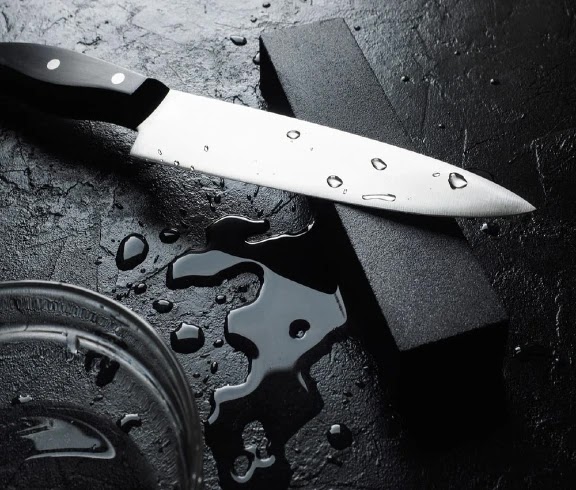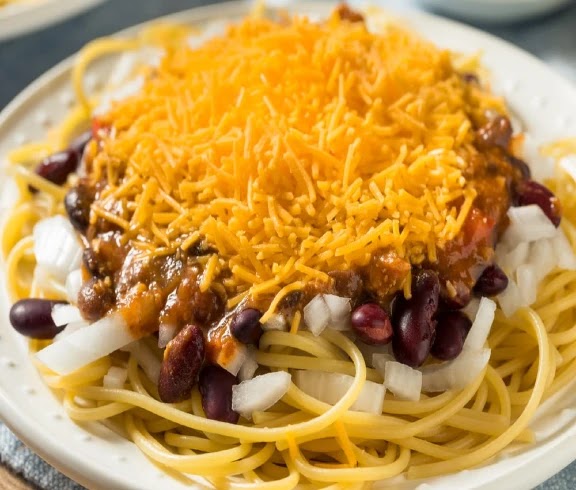Search This Blog
Best recipe provider-Here you will find all your favorite, easy and best recipe. In addition to our extensive recipe collection, we also offer helpful tips and tricks. Contact us for more information.
Featured
- Get link
- X
- Other Apps
kitchen knife sharpener
A kitchen knife is one of the most important tools in any kitchen. It is used for cutting, chopping, slicing, and dicing various ingredients. A dull kitchen knife can be frustrating to work with and can also be dangerous, as it can slip and cause injury. That's why it's important to keep your kitchen knives sharp. One of the best ways to do this is by using a kitchen knife sharpener. In this article, we'll discuss everything you need to know about kitchen knife sharpeners, including the different types, how to use them, and tips for maintaining your kitchen knives.
Types of Kitchen Knife Sharpeners:
There are three main types of kitchen knife sharpeners: manual sharpeners, electric sharpeners, and sharpening stones.
Manual Sharpeners:
Manual sharpeners are the most common type of kitchen knife sharpener. They are easy to use and are often the most affordable option. Manual sharpeners are available in a variety of designs, including handheld sharpeners, sharpening rods, and sharpening steels.
Handheld Sharpeners:
Handheld sharpeners are small, compact sharpeners that are easy to use. They are designed with a slot or two that hold the knife at the correct angle while you run the blade through the slot. Most handheld sharpeners use diamond abrasives to sharpen the blade.
Sharpening Rods:
Sharpening rods, which are long and thin, serve the purpose of sharpening the edge of the blade. These rods are made from a hard material, such as ceramic, diamond, or tungsten carbide. To utilize them, one holds the sharpening rod in one hand while gripping the knife with the other. The blade is then carefully run across the rod at the appropriate angle in order to sharpen its edge.
Sharpening Steels:
Sharpening steels, long and thin rods, sharpen and hone the edge of the blade. Users hold these steels, made from hard materials like steel, ceramic, or diamond, in one hand while grasping the knife in the other. To sharpen and hone the edge, users skillfully run the blade across the steel at the appropriate angle.
Electric Sharpeners:
Electric sharpeners are another popular option for sharpening kitchen knives. They are easy to use and require little manual effort. Electric sharpeners are available in a variety of designs, including handheld sharpeners, tabletop sharpeners, and belt sharpeners.
Handheld Electric Sharpeners:
Handheld electric sharpeners, known for their small and compact design, are specifically designed to be used with one hand. Furthermore, they incorporate a slot or two which securely hold the knife at the correct angle. Consequently, you can effortlessly run the blade through the slot to sharpen it. Most handheld electric sharpeners use diamond abrasives to sharpen the blade.
Tabletop Electric Sharpeners:
Tabletop electric sharpeners are larger sharpeners that are designed to sit on a tabletop. They are designed with multiple sharpening stages and can be used to sharpen a variety of knives. Tabletop electric sharpeners use diamond abrasives to sharpen the blade.
Belt Sharpeners:
Belt sharpeners are a type of electric sharpener that uses a belt to sharpen the blade. It was designed to be used with a variety of knives, are frequently employed in commercial kitchens. Additionally, these sharpeners come in various sizes and can effectively hone both straight and serrated blades.
Sharpening Stones:
Sharpening stones are the oldest and most traditional type of kitchen knife sharpener. A hard, abrasive material, such as natural or synthetic stone, makes them. You can find sharpening stones in various grits, and they can sharpen both straight and serrated blades.
also read: top 10 recipe provider site
How to Use a Kitchen Knife Sharpener:
The process for using a kitchen knife sharpener will vary depending on the type of sharpener you are using. However, the basic steps are as follows:
Using a Handheld Sharpener:
Place the sharpener on a flat surface.
Hold the sharpener steady with one hand.
Hold the knife handle with your other hand.
Insert the blade into the slot or slots of the sharpener.
Pull the blade through the slot(s) using light pressure.
Repeat this process until the blade is sharp.
Using a Sharpening Rod:
Hold the sharpening rod in your non-dominant hand.
Hold the knife handle in your dominant hand.
Place the tip of the sharpening rod on a flat surface.
Hold the blade at a 20-degree angle to the sharpening rod.
Starting at the base of the blade, pull the blade down and across the sharpening rod, using light pressure.
Repeat this process until the blade is sharp.
Using a Sharpening Steel:
Hold the sharpening steel in your non-dominant hand.
Hold the knife handle in your dominant hand.
Place the tip of the sharpening steel on a flat surface.
Hold the blade at a 20-degree angle to the sharpening steel.
Starting at the base of the blade, pull the blade down and across the sharpening steel, using light pressure.
Repeat this process until the blade is sharp.
Using a Handheld Electric Sharpener:
Place the sharpener on a flat surface.
Hold the sharpener steady with one hand.
Hold the knife handle with your other hand.
Insert the blade into the slot or slots of the sharpener.
Turn on the sharpener and pull the blade through the slot(s), using light pressure.
Repeat this process until the blade is sharp.
Using a Tabletop Electric Sharpener:
Place the sharpener on a flat surface.
Turn on the sharpener.
Hold the knife handle with your dominant hand.
Insert the blade into the appropriate slot(s) of the sharpener.
Pull the blade through the slot(s) using light pressure.
Repeat this process until the blade is sharp.
Using a Sharpening Stone:
Soak the sharpening stone in water for 10-15 minutes.
Place the sharpening stone on a flat surface.
Hold the knife handle with your dominant hand.
Hold the blade at a 20-degree angle to the sharpening stone.
Starting at the base of the blade, pull the blade down and across the sharpening stone, using light pressure.
Repeat this process on the other side of the blade.
Use a finer grit stone to hone the edge of the blade.
Repeat this process until the blade is sharp.
Tips for Maintaining Your Kitchen Knives:
Use a honing steel regularly to maintain the edge of your knife.
Sharpen your knife as soon as it starts to feel dull.
Use a cutting board that is gentle on your knife, such as wood or plastic.
Wash and dry your knife immediately after use to prevent rust and damage.
Store your knife in a knife block or sheath to protect the blade.
Avoid using your knife for tasks that it is not designed for, such as prying open cans or bottles.
Use a gentle cleaning solution to clean your knife, and avoid harsh chemicals or abrasive sponges.
Consider having your knives professionally sharpened once or twice a year for optimal performance. Transitioning to a professional sharpener ensures that your knives receive expert care and precision. This regular maintenance can significantly enhance the sharpness and longevity of your blades.
Conclusion:
A kitchen knife sharpener is an essential tool for any home cook or professional chef. Keeping your kitchen knives sharp not only makes them easier to use but also makes them safer. Dull knives are more likely to slip and cause injury, while sharp knives cut cleanly and precisely.
When choosing a kitchen knife sharpener, consider your needs and preferences. Handheld sharpeners are portable and convenient, while electric sharpeners offer quick and efficient sharpening. Sharpening rods and stones require more skill and practice but offer greater control and precision.
Regardless of the type of sharpener you choose, it's important to use it properly and to maintain your knives regularly. By following the tips outlined in this guide, you can ensure that your kitchen knives are always sharp, safe, and ready to use.
- Get link
- X
- Other Apps
Popular Posts
Cincinnati Chili - Spaghetti-Cheese-Onion
- Get link
- X
- Other Apps
Solution: Remove The Burnt Smell From The Kitchen
- Get link
- X
- Other Apps
.webp)



Comments
Post a Comment